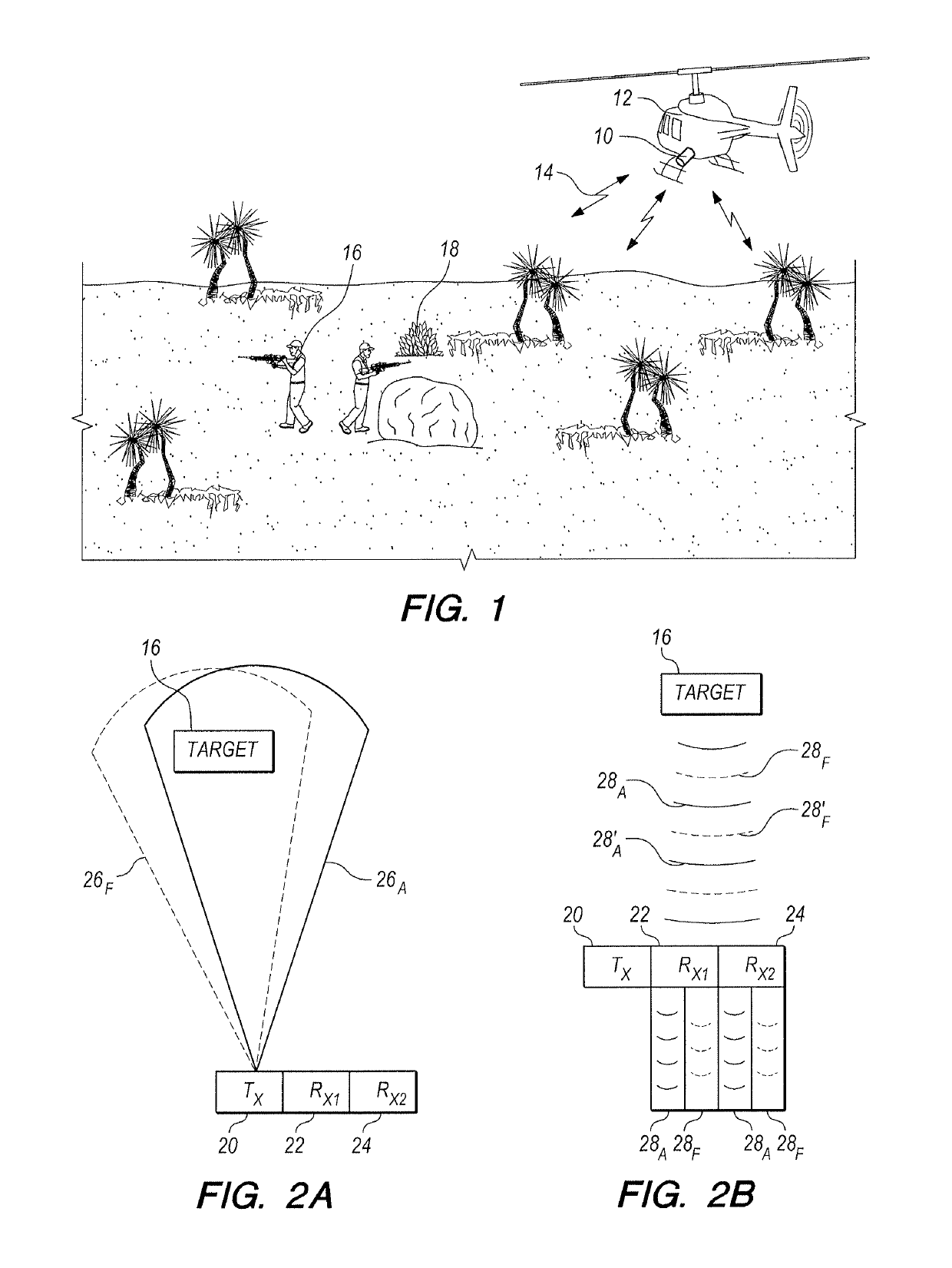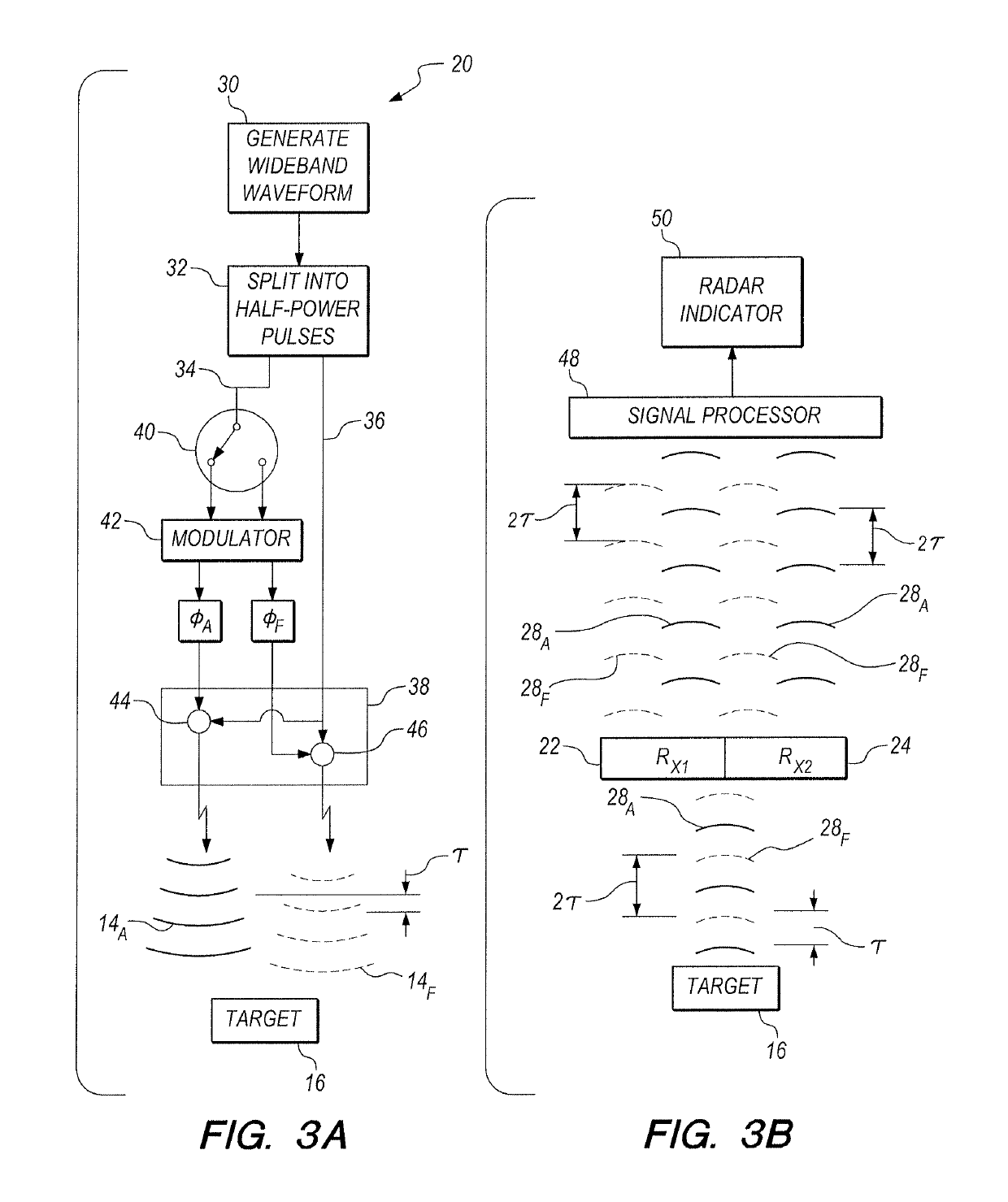Two-channel array for moving target indications
a two-channel array and indication technology, applied in the field of radar antenna systems, can solve problems such as this, but not the cas
- Summary
- Abstract
- Description
- Claims
- Application Information
AI Technical Summary
Benefits of technology
Problems solved by technology
Method used
Image
Examples
Embodiment Construction
[0020]Referring initially to FIG. 1 a radar antenna system in accordance with the present invention is shown in an operational environment and is designated 10. As shown, the system 10 is mounted on an Unmanned Aerial Vehicle (UAV) 12 to generate a pulsed radar beam 14 that can be used to detect a slow moving target 16 (e.g. troop movements). As envisioned for the system 10, this will be so, even though the target 16 may be partially obscured by ground clutter 18. For purposes of the present invention, the radar beam 14 can be any wideband waveform known in the pertinent art that can be pulsed in a manner as disclosed below. In operation, there will be a pulse interval “τ” between successive pulses of the radar beam 14. For the system 10, τ will preferably be less than about one second.
[0021]With reference now to FIG. 2A, it will be seen that the system 10 includes a single transmitter 20 (Tx), but it has two different receive antennas (receivers). These receive antennas are respect...
PUM
 Login to View More
Login to View More Abstract
Description
Claims
Application Information
 Login to View More
Login to View More - R&D
- Intellectual Property
- Life Sciences
- Materials
- Tech Scout
- Unparalleled Data Quality
- Higher Quality Content
- 60% Fewer Hallucinations
Browse by: Latest US Patents, China's latest patents, Technical Efficacy Thesaurus, Application Domain, Technology Topic, Popular Technical Reports.
© 2025 PatSnap. All rights reserved.Legal|Privacy policy|Modern Slavery Act Transparency Statement|Sitemap|About US| Contact US: help@patsnap.com


